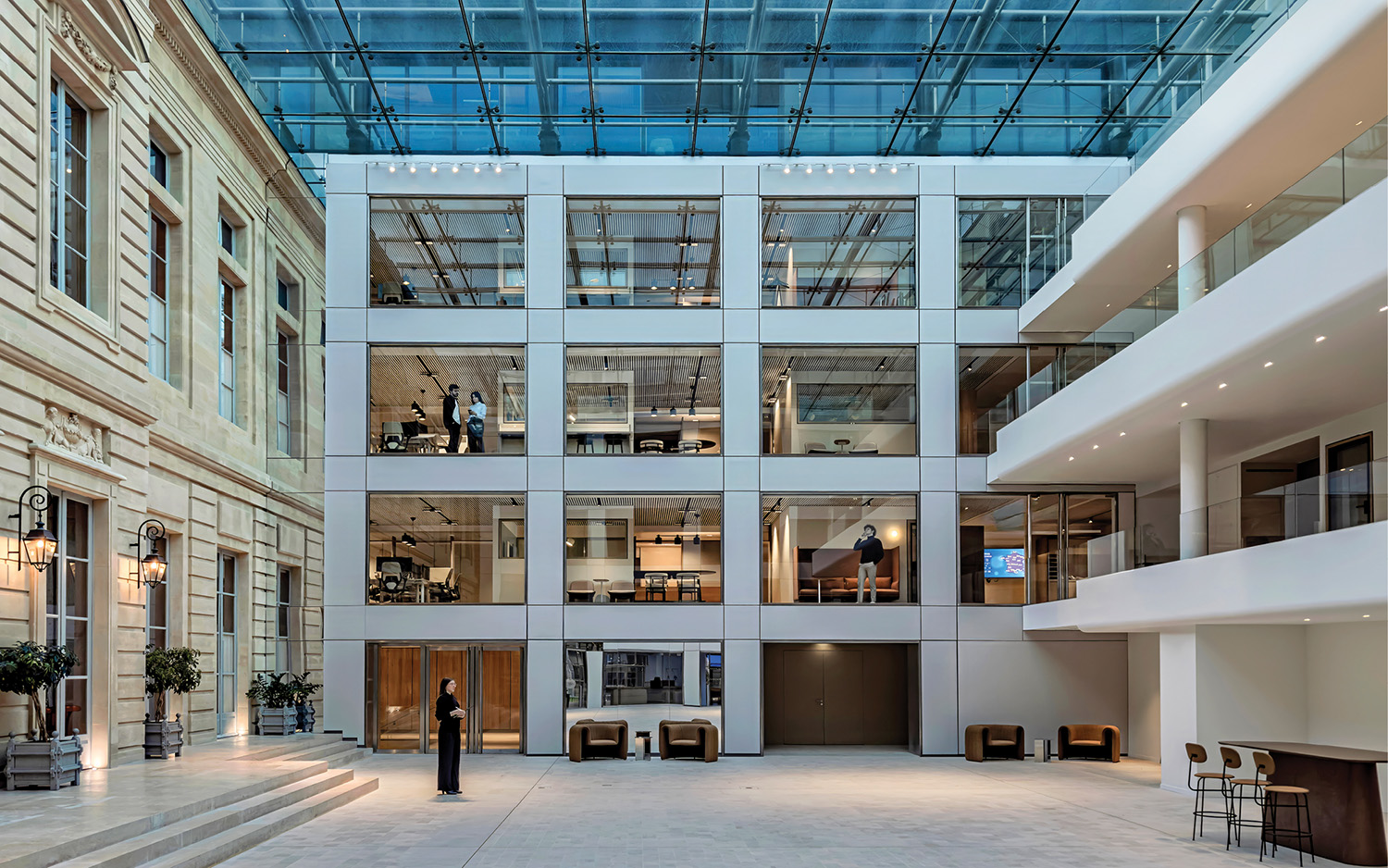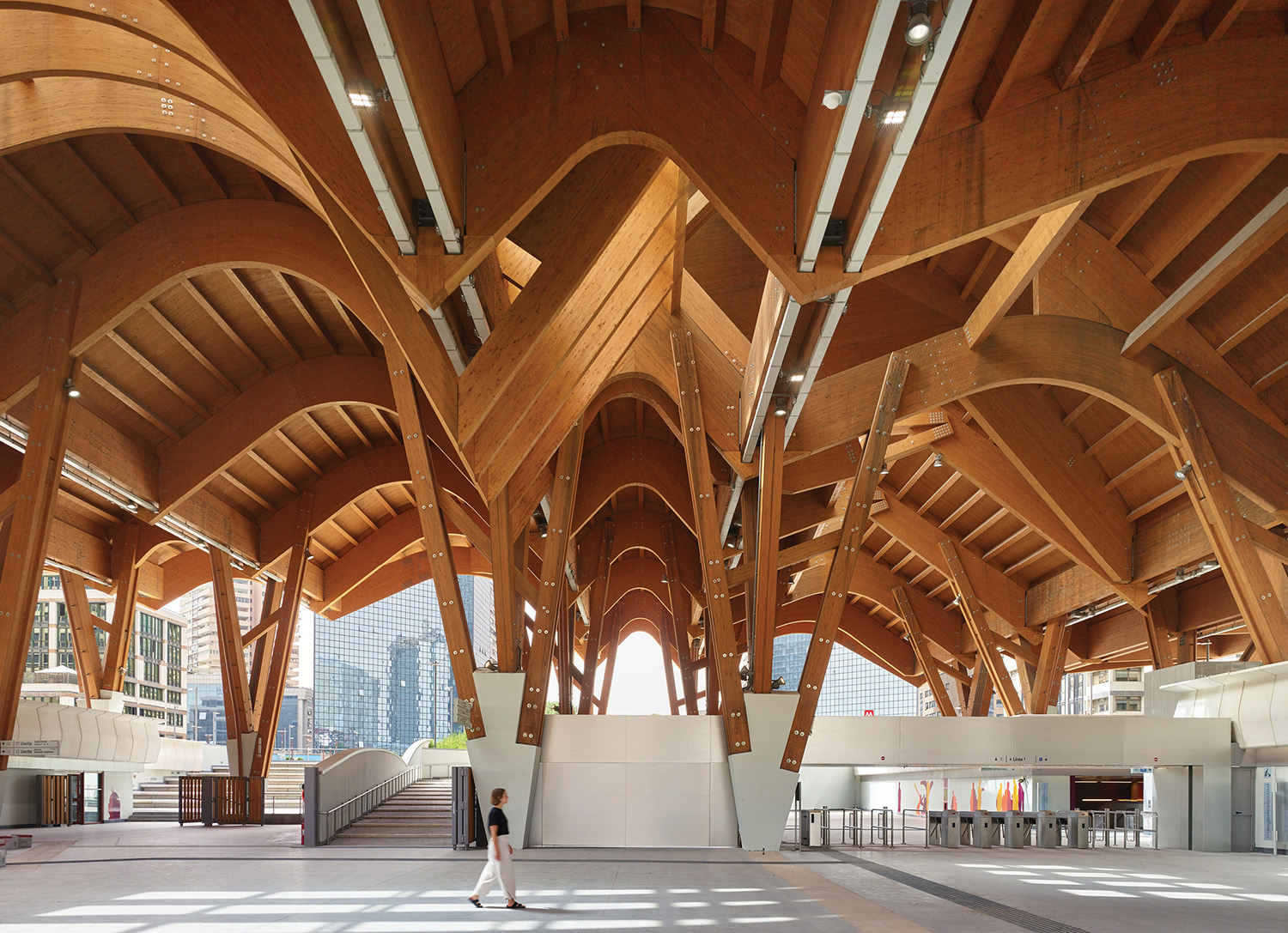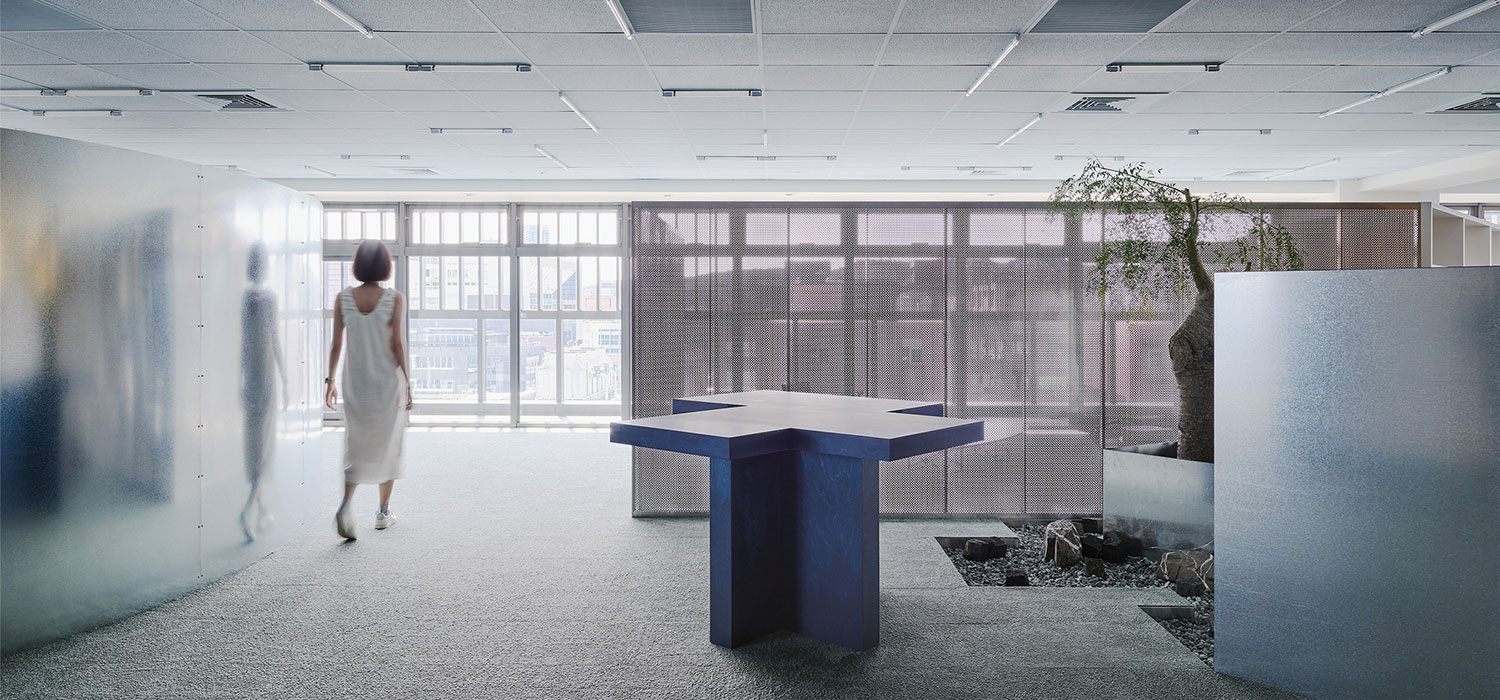Harmonic Conversion: Sara Story Transforms a TriBeCa Loft
A floor-through in one of TriBeCa’s best loft buildings is a plum assignment for a New York designer. Especially when it comes with the chance to collaborate with an admired Chicago firm and a client with great taste, an open mind, and a sense of humor. So Sara Story was thrilled when Dirk Denison Architects chose her for the job.
Born in Japan and raised in Singapore and Houston— her father was in the oil industry—she’s been energetically working her way into New York’s premier design league since moving there with her husband and snagging a job with Interior Design Hall of Fame member Victoria Hagan. “She taught me tons about design and about running a business,” Story says. When a Wall Street bachelor approached her to transform a grand prewar apartment on Fifth Avenue, facing Central Park, she founded Sara Story Design. Another bachelor, an art aficionado, is the owner of the TriBeCa loft, the top level of a former warehouse from 1930.
When he bought the unit, it had long been occupied by a renter. “It was like a squatter’s apartment, a complete warren,” Dirk Denison says. To make the full extent of the 2,300 square feet visible from the entry, he gutted the space. Then he and Story got down to business. “The synergy was perfect,” he continues. “Both of us like to bounce ideas back and forth.” A case in point: All surfaces were originally going to be matte, but the pair eventually decided to go with some luster in order to capture as much sunlight as possible, given that the apartment has windows only on the ends. To lend some importance to the smallest windows, in the living area, Denison added enamel-painted panels below. Structural columns running down the center of the public space are painted high-gloss black instead of white—embracing them instead of trying to minimize them. Following the same scheme, kitchen cabinets are lacquered black below and white above. There’s a metallic glaze on the kitchen backsplash tile, and the sparkling white stone-composite counter on the huge island matches Venetian plaster on the wall bridging the gap between the kitchen and dining area. Other glistening surfaces include the quartzite bases on lamps in the living area. Story also used her favorite white wall paint, which is slightly pearlescent.
Instead of the developer’s three-bedroom layout, Denison opted for a master suite, plus a den. The latter can be made private for guests with the help of two perpendicular sliding doors suspended from factory-style ceiling tracks. In keeping with the industrial feel, Story clad one of the doors in patinated zinc.
She knew that the furnishings had to be suitably masculine and tailored—and as contemporary as the bachelor’s taste in painting and photography. The aesthetic had to be flexible enough, however, to make an easy transition to a family home somewhere down the line. Her solution was a neutral palette with so much contrast and variety as to seem almost colorful, even before you consider the art and such grace notes as the bright orange French 1940’s nesting tables in the living area.
Its furniture is a mid-century mix. Side tables are Paul McCobb, but most pieces were chosen for comfort and visual appeal rather than provenance. A leather-covered sofa, its tufted cushions hinting at traditional, sits in front of a cocktail table that riffs on Donald Judd minimalist sculpture. Two Italian 1970’s lounge chairs covered in white leather are extremely seductive. “Once you get into them,” Story says, “you don’t ever get out.”
In the dining area, a chandelier with arms fashioned by embedding flexible LED strips in translucent resin is suspended above the table’s black walnut top. Horsehair covers the seats of the surrounding chairs. “Sara has an incredible capacity for detail,” Denison notes. The owner’s favorite piece is the sideboard, its bold brass front flaunting rows of round cutouts.
Story likes to use wallpaper, and she lined the office niche hidden in the den with a lighthearted pattern she describes as “doodles of people’s faces.” The den’s bench, painted with a colorful and cartoonish wood-grain pattern, is a collaboration by an artist, Richard Woods, with designer Sebastian Wrong. She also went beyond the call of duty to create a few art moments herself—most notably in the powder room, where claret-painted shelves display bottles labeled with phrases along the lines of “Do not operate heavy equipment.” She was inspired partly by Damien Hirst pharmacy installations. And partly by the idea that guests are always snooping in their hosts’ medicine cabinets.


